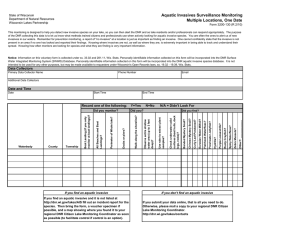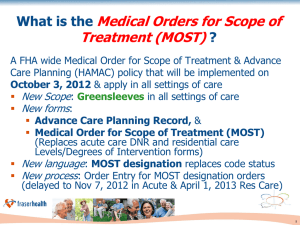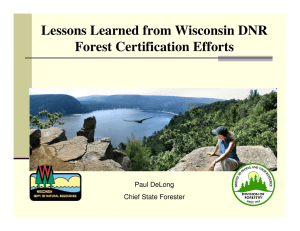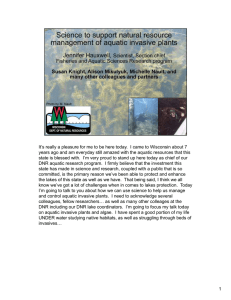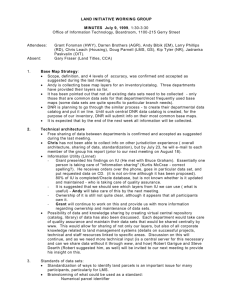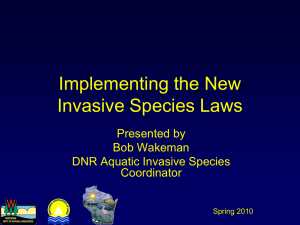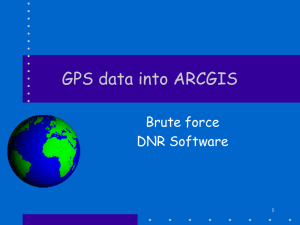Vision Statement - The Aldo Leopold Foundation
advertisement
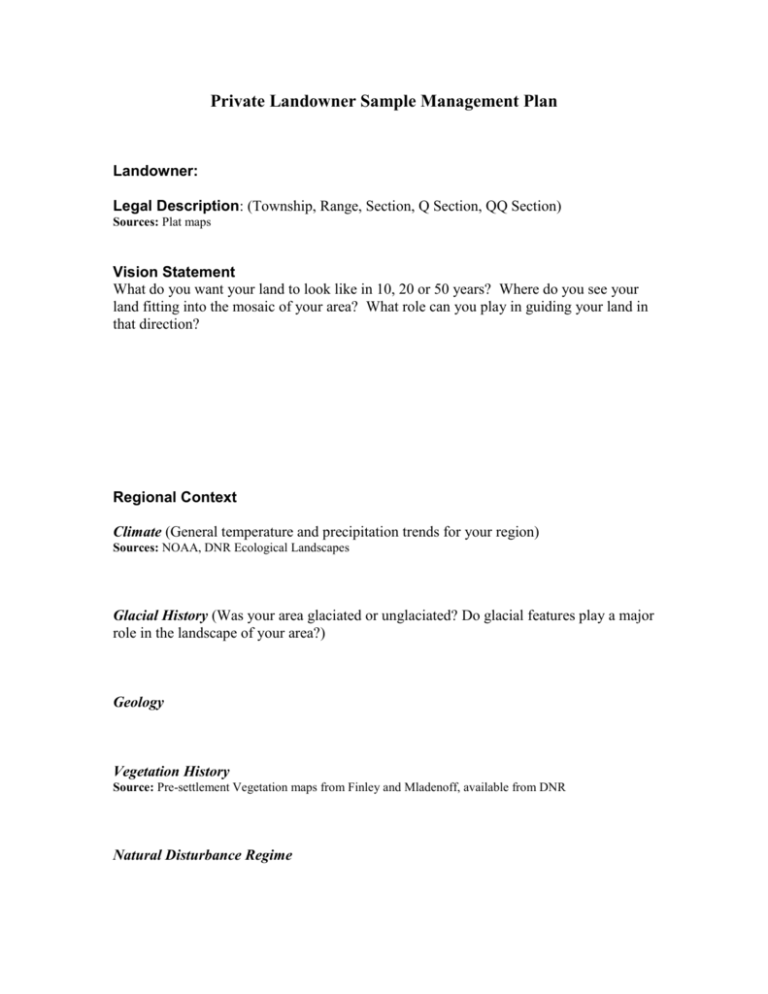
Private Landowner Sample Management Plan Landowner: Legal Description: (Township, Range, Section, Q Section, QQ Section) Sources: Plat maps Vision Statement What do you want your land to look like in 10, 20 or 50 years? Where do you see your land fitting into the mosaic of your area? What role can you play in guiding your land in that direction? Regional Context Climate (General temperature and precipitation trends for your region) Sources: NOAA, DNR Ecological Landscapes Glacial History (Was your area glaciated or unglaciated? Do glacial features play a major role in the landscape of your area?) Geology Vegetation History Source: Pre-settlement Vegetation maps from Finley and Mladenoff, available from DNR Natural Disturbance Regime Land History Ownership History (Past owners, how your land changed hands over time) Source: County Register of Deeds Land Use History (Was your land grazed or tilled? Was it logged? Were there previous structures built on your land?) Adjacent Land (Does your land border public or protected lands? What land management practices have your neighbors implemented on their land or do they pose a threat to your goals in any way?) Land Description Topography/Aspect (Description of the “lay of the land,” including any glacial features or other dominant landforms) Sources: Topographic maps, DNR WebView Soils (Description of soil types, including permeability, drainage, runoff, and erosion potential) Sources: County Soil Surveys, NRCS Web Soil Survey Hydrology (Streams, waterways, or ponds on your land or in close proximity, potential for flooding or ponding during high water events) Plant Communities (Types of natural communities occurring on your land, including evidence or remnant of pre-existing communities) Sources: Plant guide books, WisFlora, walking surveys taken by resource professional or other knowledgeable person. Fauna (Mammal, bird, herp, and fish species seen on property, particularly less common species that may be helped by management practices) Exotic Species (Exotic and invasive plant and animal species seen on property and their frequency of occurance) Sources: species inventory, WisFlora, IPAW, DNR Invasive Species Threatened or Endangered Resources Source: Natural Heritage Inventory Cultural Resources Aesthetics Management Plan Goals (General statements of where you are headed, e.g. maintain land health, restore land to pre-settlement conditions) Objectives (Specific tasks that are instrumental in reaching your goals, e.g. discourage brush encroachment, control invasive species, restore prairie) Objectives Justification (e.g. historic vegetation, natural disturbance regimes, land use history, etc.) Management Practices Which tools will you use to achieve your objectives? (timber stand improvement, prescribed fire, herbicide treatments, etc.) Timeline: Prioritize your objectives and match your chosen practices to the best time of year.
